- What Is an Income Tax Notice?
- Common Reasons for Receiving an Income Tax Notice
- TDS Mismatch (Form 16 vs Form 26AS/AIS)
- Unreported Income
- Errors in the Filing ITR Process
- Incorrect Deductions
- Late or Non‑Filing
- Types of Income Tax Notices Issued to Salaried Employees
- Section 143(1): Intimation
- Notice Under Section 139(9)
- Notice Under Section 142(1)
- Notice Under Section 143(2)
- Section 148: Reassessment
- How to Respond to an Income Tax Notice (Step‑by‑Step)
- Step 1: Read the Notice Carefully
- Step 2: Gather Documents
- Step 3: Log in to the e‑Filing portal
- Step 4: Select the Relevant Notice and Upload Your Response
- Step 5: Save Acknowledgments
- Consequences of Non‑Compliance
- Expert Tips for Handling Income Tax Notices
- It's a Signal, not a Verdict!
- FAQs
Understanding Income Tax Notices: A Guide for Salaried Professionals
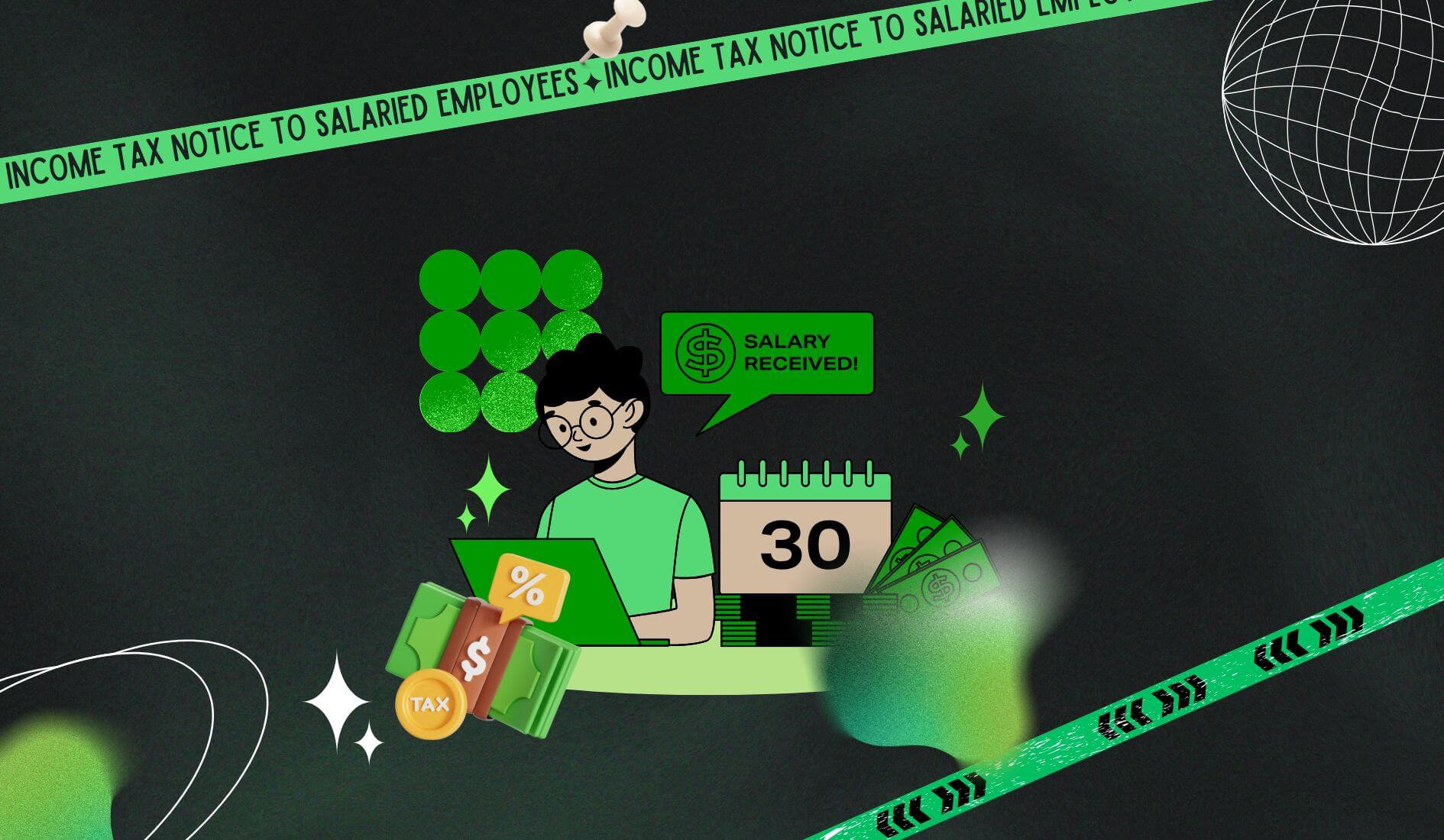
Ever wondered what the most anxiety-triggering incident related to tax payments is? That’d be an income tax notice to salaried employees—arriving early in the morning while you’re checking the mail at your breakfast table.
Salaried professionals usually depend on their employer’s TDS and Form 16 for their tax responsibilities. These notices are increasingly routine in a data-rich environment that cross-checks the tax return against Form 26AS, AIS (Annual Information Statement), and additional third-party reports.
However, sometimes, there are reporting discrepancies. For example, the income reported by the employee doesn’t match that of the employer. In addition, excessive or incorrect deductions, undisclosed incomes (from freelance, rentals, and similar sources) are also triggers of income tax notices.
Yes, it’s a nerve-wrecking experience. But there are solutions. Knowing what caused the notification trigger helps you prepare the correct response. This comprehensive article should help you find the right solution. So, keep reading.
What Is an Income Tax Notice?
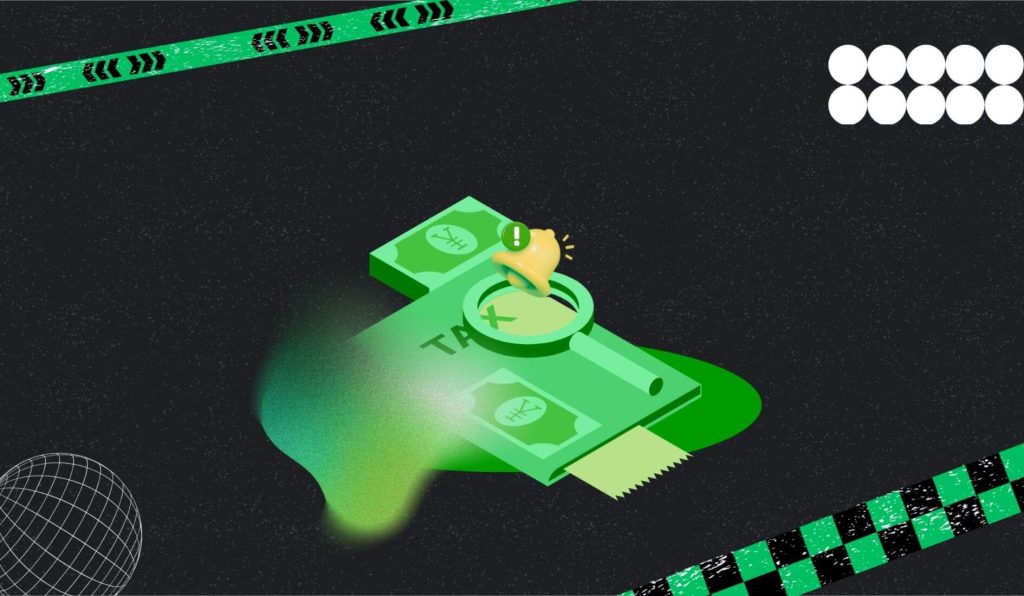
The ITD (Income Tax Department) sends an official intimation requesting information from an employee. The notice requests information, pointing out a defect, or initiates assessment/verification steps for the employee. This is what you call an income tax notice.
For salaried employees, common triggers include TDS mismatches, incorrect deductions (HRA/LTA/80C), non-filing, or unreported income (Interest, rental, capital gains, freelance gigs).
The Income Tax Act 1961 empowers the ITD to issue an income tax notice to salaried employees. You may get a notice under the following sections:
- Section 143(1): Intimation after processing your return.
- Section 142(1): Inquiry notice seeking books, documents, or even a return if not filed.
- Section 139(9): Defective return—errors/incomplete information to be rectified.
- Section 143(2): Scrutiny notice for detailed assessment.
- Section 148: Reassessment where income may have escaped assessment.
Common Reasons for Receiving an Income Tax Notice
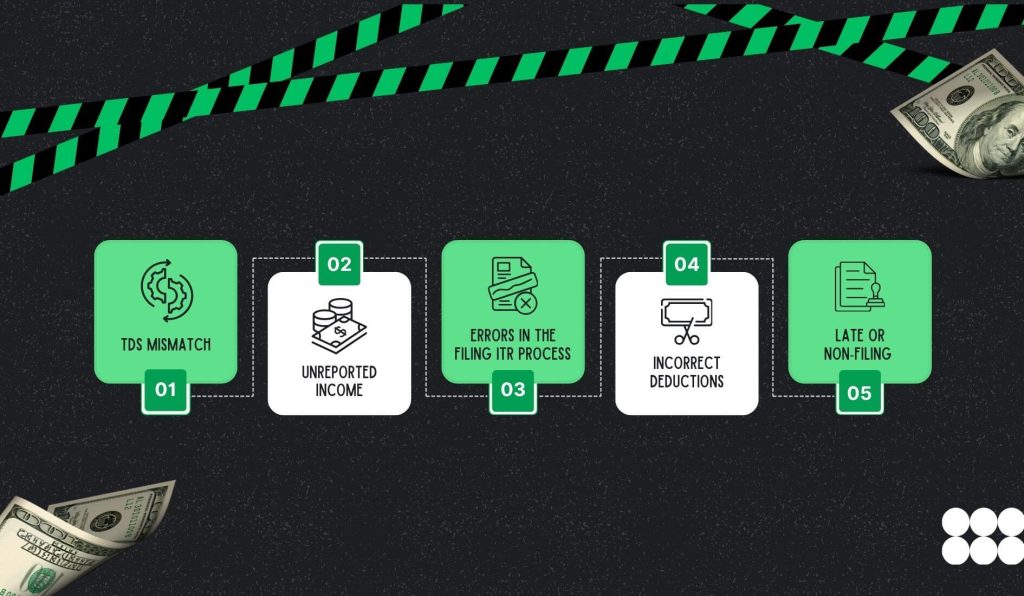
The ITD might send salaried employees income tax notices for the following reasons:
TDS Mismatch (Form 16 vs Form 26AS/AIS)
When the TDS credited in Form 26AS (or AIS/TIS) doesn’t match the TDS you claimed in the ITR, you may receive an intimation under 143(1).
The corrective action here also lies with the employer. You must reach out to the person responsible for filing the TDS return and explain the situation. They should correct this by filing a revised TDS return.
Unreported Income
In case you have other sources of income, for example, Interest from savings/FDs, dividends, rent, capital gains, or earnings through freelance work, these also surface in AIS. As a result, it can result in a follow-up when it doesn’t show in the tax returns.
Errors in the Filing ITR Process
Not all notices sent to salaried employees by the ITD are for intentional evasion. Sometimes the tax department sends notices for procedural errors. For example, you might receive a notice from the ITR if the tax details on your record are incomplete. It could be due to wrong personal information, missing fields, or a wrong ITR form. This is called Defective return (Section 139(9)).
Incorrect Deductions
When salaried employees over-claim their HRA/LTA or Section 80C without proper evidence, it may lead to disallowance or verification.
Late or Non‑Filing
Another reason for getting income tax notices as a salaried employee is due to missing or failing to file taxes when required. Negligence or mistake in filing tax on time attracts notices under Sections 234A/234B/234C.
Types of Income Tax Notices Issued to Salaried Employees
When the ITR sends an income tax notice to salaried employees, it would be under one of the following types:
Section 143(1): Intimation
Here’s a common and less severe type of notice you may receive from the ITD through an automated communication. This notice is sent to you after the Central Processing Centre (CPC) has processed the ITR(income tax returns) and found a discrepancy with the records present at the Department. Luckily, you can respond or seek rectification to this mismatch through the online portal.
Notice Under Section 139(9)
When you file an ITR with errors or incomplete data, you will get a “defective return” notice. It means that you have to rectify it within 15 days; otherwise, you’ll your return may be treated as invalid.
Notice Under Section 142(1)
This notice is sent to a salaried employee before the full assessment of their tax returns. The assessment officer sends the mail under section 142(1) seeking additional information, such as documents and accounts, to complete the assessment.
The assessing officer triggers this income tax mail to get further clarification on your claimed deduction and the reported income.
Notice Under Section 143(2)
Section 143(2): Scrutiny or notice under section 143(2) is sent to the salaried individual letting them know that the tax returns have been selected for a detailed scrutiny assessment. This is typically handled largely via faceless mechanisms.
Section 148: Reassessment
This income tax notice is sent to salaried employees when the Department has reason to believe income escaped assessment; timelines and reliefs have been addressed in recent circulars/updates.
How to Respond to an Income Tax Notice (Step‑by‑Step)
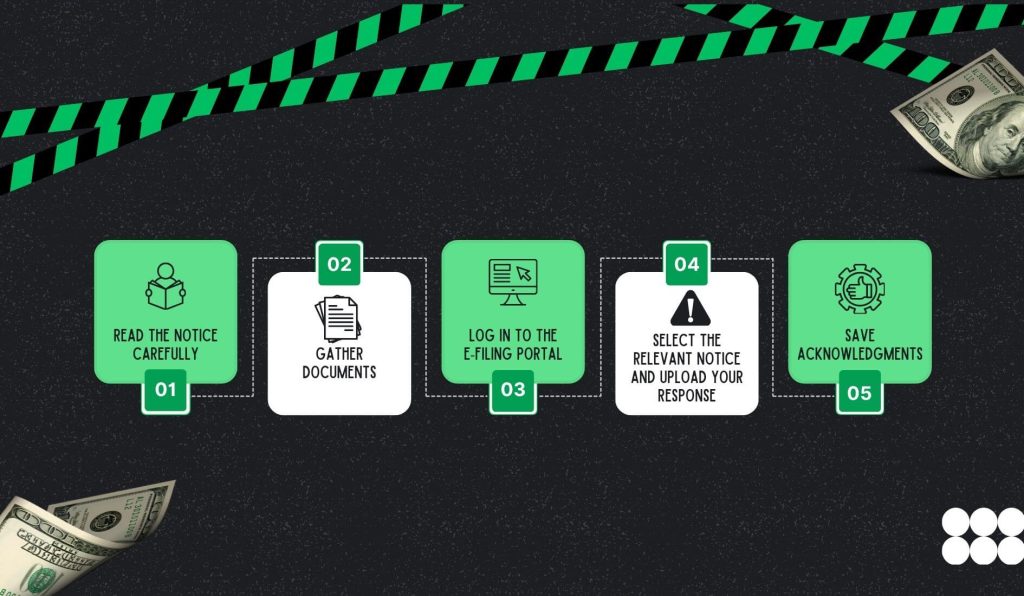
So, when the ITD sends an income tax notice to salaried employees, how does one respond to that notice? Here’s how:
Step 1: Read the Notice Carefully
First, go through the notice carefully. Note the section, the DIN/Reference ID, the issue, and the deadline for responding. Additionally, you can authenticate the notice pre‑login on the online portal available for Indian citizens.
Step 2: Gather Documents
Once you have the notice figured out, prepare the corresponding documents to respond to the notice in time. Typically, you’ll need proofs such as Form 16, Form 26AS/AIS, payslips, bank statements, investment proofs, rent receipts, and any prior correspondence.
Step 3: Log in to the e‑Filing portal
Now you have to log in to the e-Filing portal. Next, go to ‘Pending Actions’ → ‘e‑Proceedings.’ This window will allow you to view notices and submit your responses digitally.
Step 4: Select the Relevant Notice and Upload Your Response
The comply to notice utility allows users to upload attachments in the following formats and sizes: PDF/XLS/CSV (up to 10 files; each ≤5 MB). Keep your explanations factual and concise for a clear response and faster assessment.
Step 5: Save Acknowledgments
After you have uploaded your response, download the submission receipt or acknowledgement that the platform autogenerates for you. You’ll need these receipts, so compile them for future reference.
Consequences of Non‑Compliance
There are different levels of penalties for someone failing to comply with the income tax notices sent to them. For example, failure to comply with 142(1) or 143(2) notices usually attracts ₹10,000 per failure under Section 272A(1), among other penalties.
Interest Charges:
- 234A: 1% per month for late filing;
- 234B: 1% per month for short/zero advance tax;
- 234C: 1% per month for deferment of installments—computed per Rule 119A.
Legal Action: When an individual constantly fails to respond to the income tax notices, it can result in best‑judgment assessment (Sec. 144). Furthermore, it may also lead to cases or prosecution under Section 276D.
Expert Tips for Handling Income Tax Notices
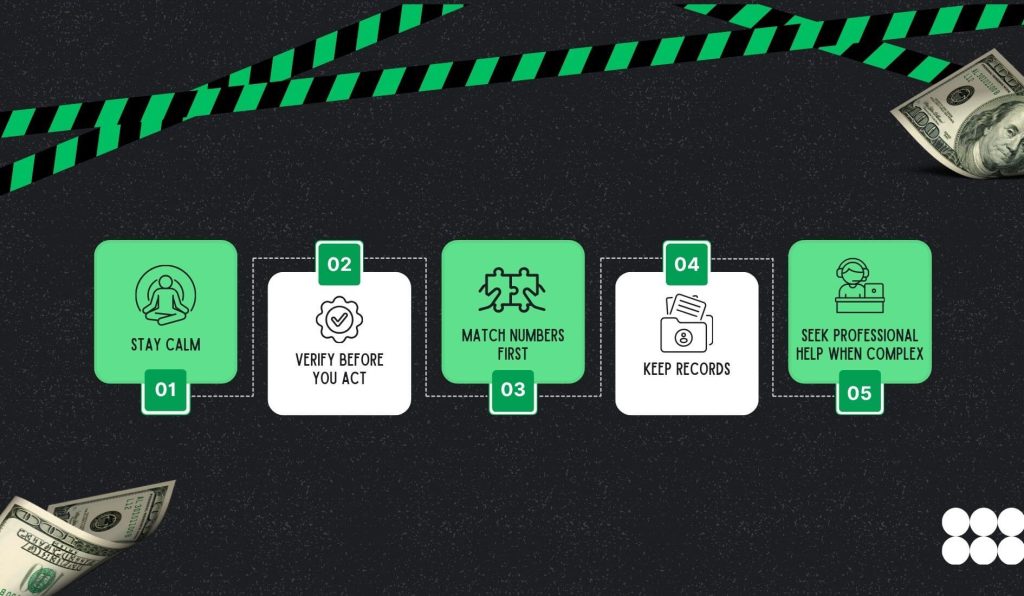
So, what to do if the ITD sends an income tax notice to salaried employees? Follow these tips to handle your income tax notices smoothly.
Stay Calm: Many of the notices are automated and solvable with a short clarification or corrected figures. So, understand the notice first and take the required action accordingly.
Verify Before You Act: It’s easy to get overwhelmed and act when you get a notice from the income tax department. We suggest confirming the notice first and authenticating the notice/order within the time and responding accordingly.
Match Numbers First: Cross-check the ITR with Form 26AS/AIS/TIS; where TDS is short in 26AS, request your employer/diductor to revise TDS returns.
Keep records: Keep detailed proof of the acknowledgement after you submit a response. Check the compliance portal for e-campaigns/e-verifications you’ll need to address
Seek Professional Help When Complex: Sometimes, scrutiny/reassessment or multi-year issues can become complex. It’s best to take help from tax professionals to stay on the safer side. They can help by offering practical guides and checklists to help you get through the process.
It’s a Signal, not a Verdict!
Here’s a suggestion for you if you’re a salaried employee and received an income tax notice: it’s not a verdict, but rather a signal to explain, correct, or reconcile. So, calm down. First, assess the situation by matching data from the AIS, and use the e-proceeding tools available at your disposal to respond to the notice sent to you.
Follow the tips we have shared in this article to find your problem-specific solutions. Finally, if you are doubtful about any specific details on the notice, don’t hesitate to consult a tax professional. Did you find this guide helpful? Share your thoughts in the comments. Also, share the article with someone who’s also facing similar issues. Thank you for reading.
FAQs
The income tax notice is an official communication from the ITD to clarify inconsistencies, request documents, and perform assessment actions. The notices are typically sent under the following sections: 143(1), 142(1), 139(9), 143(2), or 148.
Common reasons for someone getting an income tax notice are due to TDS mismatches, unreported income, incorrect deductions, or non‑filing/late filing. The Department cross‑checks with AIS/26AS, so a very minor omission or mistake can trigger automated intimations.
Log in to the e-filing portal. Then check for pending actions. Go to e-proceedings and select the notice. Upload response with attachments in PDF/XLS/CSV. Follow the file size limit stated on the portal (typically less than five MBs). Once submitted, record the autogenerated acknowledgement slip for future reference.










